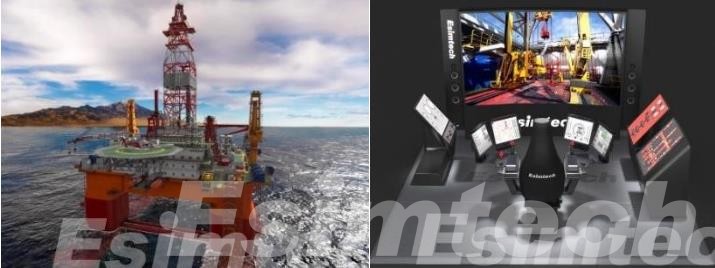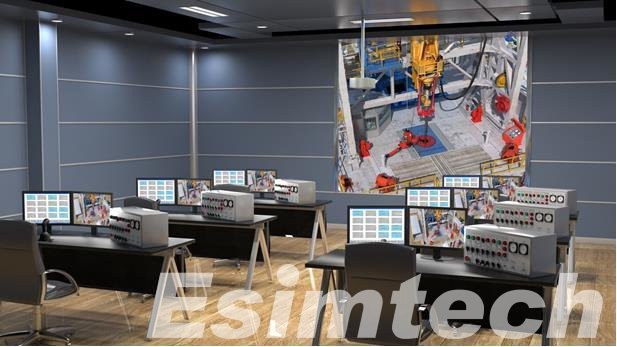How Drilling System Optimization is Realized Through Simulation
The oil and gas industry plays a crucial role in meeting global energy demands. Drilling is a fundamental process within this industry, aiming to extract hydrocarbon resources from beneath the Earth’s surface. As technology continues to advance, optimizing drilling systems has become essential to increase operational efficiency, reduce costs, and minimize environmental impact. One of the key tools in achieving this optimization is the use of sophisticated simulations that replicate drilling operations in a virtual environment. This article explores the significance of drilling system optimization through simulation and its impact on the industry.

Understanding Drilling System Optimization
Drilling operations are intricate endeavors that involve a myriad of parameters, such as drill bit type, rotational speed, mud properties, and downhole conditions. The conventional trial-and-error approach to finding the optimal combination of these parameters can be time-consuming, costly, and potentially hazardous.
Drilling system optimization involves the strategic adjustment of various parameters and variables to achieve the best possible outcomes during drilling operations. The objective goes beyond mere speed; it encompasses a holistic approach that considers factors such as drilling efficiency, equipment longevity, energy consumption, and environmental impact. By leveraging simulation tools, engineers and operators can create virtual models of drilling systems, test different scenarios, and identify optimal configurations before executing real-world operations.

Key Aspects of Drilling System Optimization
- Drilling Rate and Bit Life: One of the primary goals of optimization is to maximize the drilling rate while maintaining the longevity of the drill bit. Simulations can help determine the optimal combination of weight on bit, rotary speed, and other factors to achieve higher penetration rates without causing excessive wear on the bit.
- Energy Efficiency: Energy consumption is a significant cost factor in drilling operations. Simulations can analyze the energy requirements of various drilling techniques and help identify methods to minimize energy consumption while maintaining productivity.
- Hole Cleaning and Cuttings Transport: Proper hole cleaning is essential for efficient drilling. Simulations can model the flow of drilling fluid and cuttings, allowing engineers to optimize drilling fluid properties and flow rates to ensure effective cuttings transport and hole cleaning.
- Wellbore Stability: The stability of the wellbore is crucial to prevent issues such as borehole collapse. Simulations can predict potential stability problems based on geological and drilling parameters, enabling proactive measures to ensure wellbore integrity.
- Cost Estimation: Optimization isn’t just about performance; it’s also about cost-effectiveness. Simulations can provide accurate cost estimations based on different drilling scenarios, helping operators make informed decisions that align with their budget constraints.
Simulation as a Tool for Drilling System Optimization
In the realm of modern drilling operations, complexity is the norm, and a myriad of variables intertwine to shape project outcomes. The traditional method of optimization through trial and error, while informative, grapples with limitations in today’s intricate drilling landscape. The intricacies of drilling systems, compounded by intricate technologies and numerous interdependent factors, render manual adjustments of variables resource-intensive and time-consuming. At the forefront of addressing these challenges is simulation technology. By constructing intricate digital models mirroring real-world conditions, the drilling simulation system incorporates an exhaustive array of parameters, providing a comprehensive overview of drilling processes for meticulous analysis and informed decision-making.
Simulation models encapsulate a wide spectrum of variables shaping drilling operations. Executing simulations empowers engineers to systematically experiment with scenarios by manipulating parameters, and identifying optimal configurations for desired outcomes. This approach eliminates the need for exhaustive physical trials, enabling the exploration of a broad range of possibilities, thereby conserving valuable time and resources. As simulation tools advance, the potential for enhancing drilling operations and achieving unparalleled efficiency and cost-effectiveness expands. Simulation-driven drilling optimization represents a transformative shift, propelling the industry toward newfound levels of excellence and accomplishment.

Benefits of Simulation-Driven Drilling System Optimization
- Enhanced Efficiency: Optimized drilling systems achieve higher penetration rates, reducing the time required to reach target depths. This is particularly valuable in remote or challenging locations.
- Extended Tool Life: Precise parameter adjustments based on drilling simulators which can provide real-time data reducing the wear and tear on drill bits and other equipment, leading to longer tool life and reduced replacement costs.
- Minimized Downtime: By preventing issues such as stuck pipe, wellbore instability, or drilling fluid problems, optimization reduces unplanned downtime and associated costs.
- Safety Improvement: Well-designed drilling systems with optimized parameters are inherently safer, as they minimize the risks associated with high-pressure blowouts, equipment failures, and other operational hazards.
- Cost Savings: Optimization directly contributes to cost savings by reducing operational expenditures, optimizing resource utilization, and minimizing costly failures.
Challenges and Considerations of Simulation-Driven Drilling System Optimization
While simulation-based drilling system optimization offers numerous benefits, it’s important to acknowledge some challenges:
- Model Accuracy: The accuracy of simulation results heavily depends on the quality of input data and the complexity of the model. Ensuring accurate representation of real-world conditions is crucial for reliable results.
- Data Integration: Simulations require data from various sources, including geological surveys, drilling equipment specifications, and fluid properties. Integrating and validating this data can be a challenge.
- Model Validation: Simulation models need validation against real-world data to ensure their accuracy. This may involve conducting field tests and comparing results.
Conclusion
The integration of simulation techniques into drilling system optimization is reshaping the landscape of drilling operations. By creating virtual environments that closely replicate real-world conditions, engineers and operators can fine-tune drilling parameters, enhance efficiency, and curtail costs. The benefits extend beyond immediate financial gains, encompassing extended equipment lifespans, heightened operational safety, and a reduced impact on the environment. As technological advancements continue, the role of drilling system optimization through simulation is poised to become even more integral in shaping the future of drilling operations across industries. The synergy of innovation and optimization paves the way for a more efficient, sustainable, and productive drilling landscape.
